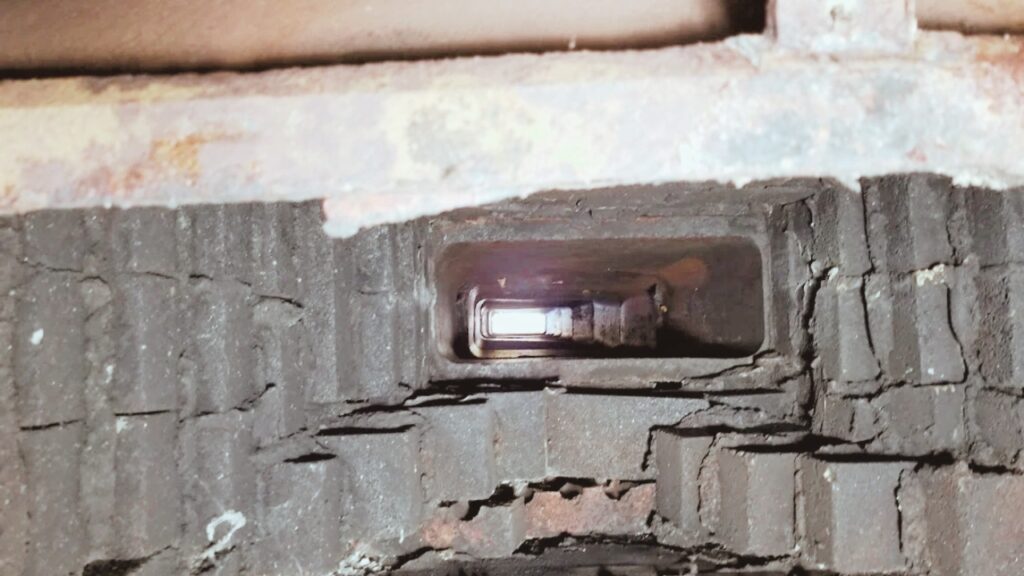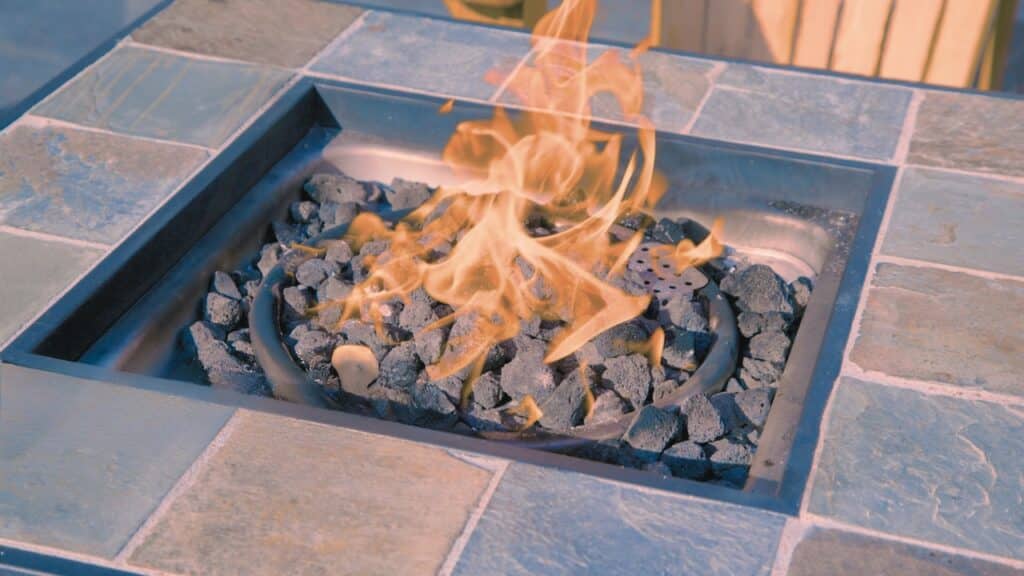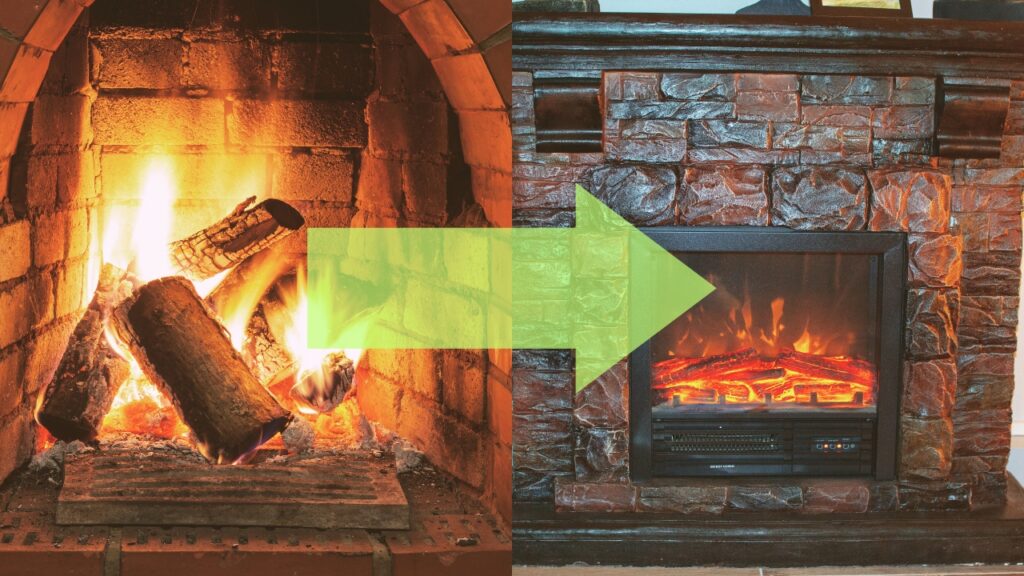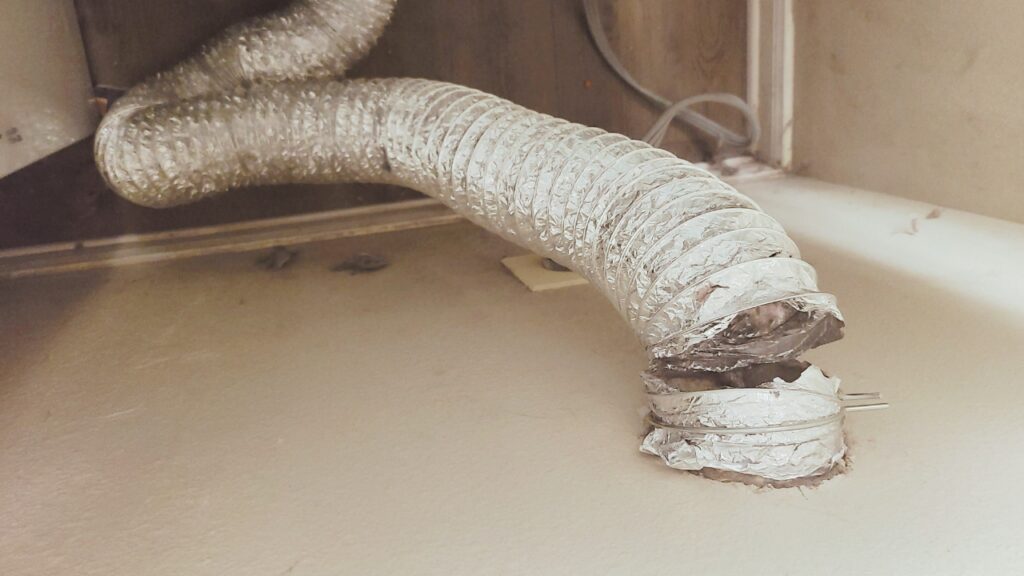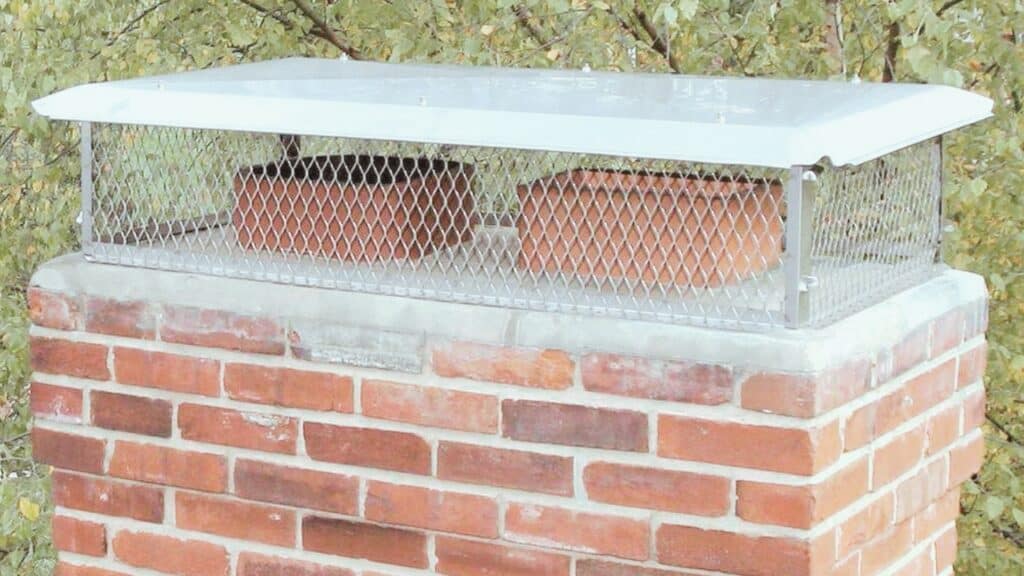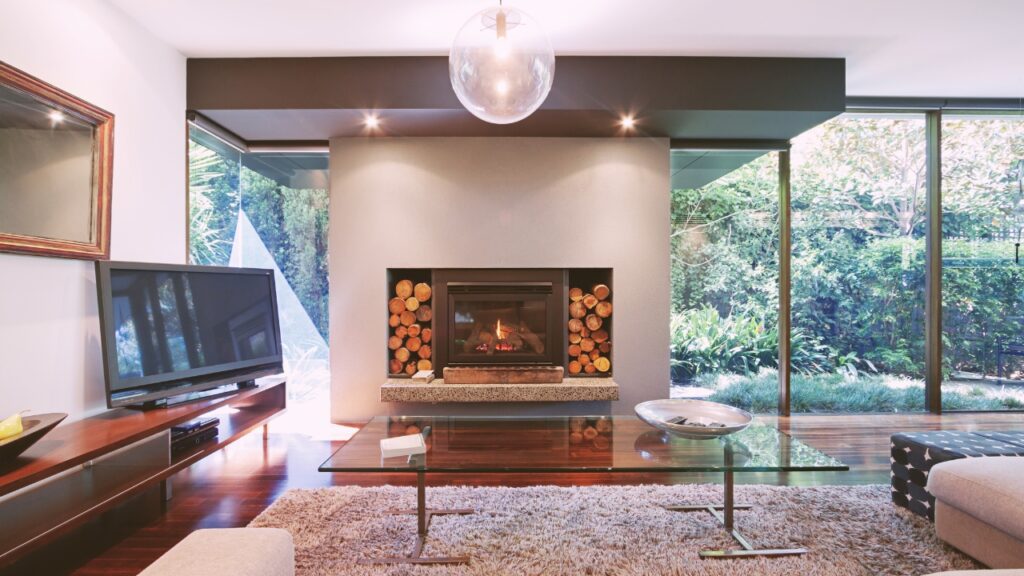Ironically, the thing that’s supposed to bring warmth into your home is also the thing that can let cold air in. If you have a fireplace, you’ve probably noticed that it can make your home feel drafty and chilly.
The best way to block cold air from fireplace is to inspect the fireplace damper and ensure it’s tightly sealed. The fireplace damper is a metal plate that seals the fireplace’s opening. If the damper is open, cold air can come down the chimney and into the room.
For those with older fireplaces, adding a glass or metal fire screen can be beneficial. This accessory can serve as a barrier to cold air while simultaneously permitting the warmth and charm of the fire to permeate the room.
This guide will teach you strategies to prevent cold air from invading your home via your fireplace.
Let’s get started!
Why Is Cold Air Coming Out From My Fireplace?
As briefly mentioned above, there are a few reasons for cold air coming from your fireplace.
In this section, we will go into more detail about each of these possibilities so that you can make an informed decision about the best way to address the issue in your home.
Unsealed Fireplace Damper
The fireplace damper is the metal plate that covers the fireplace’s opening. It sits just above the firebox, and when it’s closed, it should fit snugly against the metal or masonry surround.
When not using the fireplace, the damper should be closed to prevent cold air from entering your home through the chimney.
If the damper is not properly sealed when the fireplace is not in use, cold air can enter your home, making it feel drafty near the fireplace.
Size of the Chimney
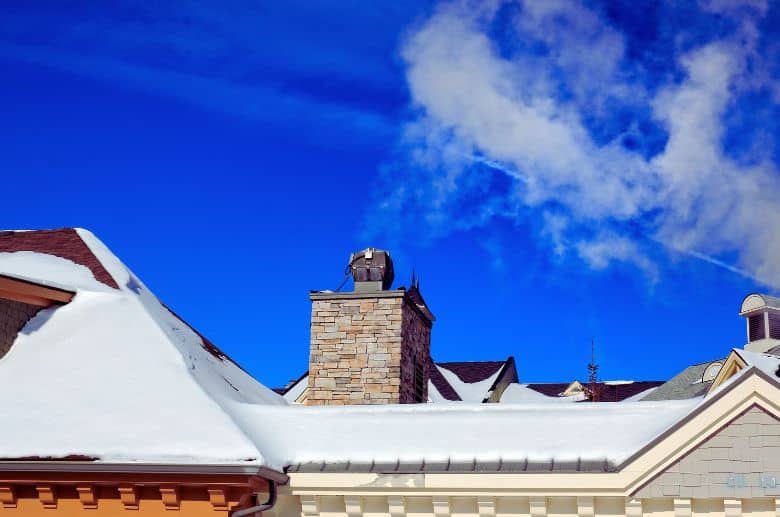
The chimney’s size also influences how much cold air comes into your home through the fireplace. If the chimney is too small, it will not be able to draw the cold air out of the house quickly. As a result, cold air will enter the room near the fireplace.
The recommended size of the chimney flue is at least an eighth of the fireplace opening.
You can sometimes solve this problem by installing a larger chimney. However, we suggest that you consult a professional to find the right solution for the problem.
——
Do You Need to Hire Chimney & Fireplace Expert?
Get free quotes from qualified experts near you. No commitment required!
——
Negative Air Pressure
Another possibility is if there is negative air pressure in your home. This means that the air pressure inside your home is lower than outside. As a result, air will flow into your home through any openings to equalize the pressure.
One way to tell if this is the case is to hold a piece of paper up to the fireplace (when you’re not using it, of course). If the paper is pulled toward the fireplace, this indicates negative air pressure in the house.
There are a few ways to solve this problem, but the most common is to install a fireplace insert. This is because they’re designed to create positive air pressure, which pulls air up through the insert instead of down into the room.
This will help create a better seal around the fireplace, preventing cold air from entering your home.
Your Chimney’s Height
Besides your chimney’s size, its height also influences how much cold air comes into your home. If the chimney is not tall enough, the cold air will not be able to rise up and out of the chimney.
To get a better understanding of your chimney’s draft efficiency based on its dimensions, you might want to use a chimney draft calculator. This tool can provide insights into how the height and size of your chimney impact its performance
The recommended height for a chimney is at least 3 feet higher than the roofline, and If your chimney does not meet this criterion, you may need to have it extended.
As with changing the size of the chimney, we recommend you consult a professional before making any changes to your chimney’s height.
These are the most notable reasons why cold air might come from your fireplace. If you are still trying to figure out the source of the problem, we recommend consulting a professional to get a second opinion.
With their help, you can find the right solution to keep your home warm and comfortable all winter.
How to Block Cold Air From Fireplace?
With clear insights into how you may experience a cold fireplace, you are better positioned to find the best solutions for your particular case.
Recognizing the problem is often more than half the battle to find a solution. So, if you have a cold fireplace, what can you do about it?
There are various ways to stop cold air from coming through your fireplace:
1. Inspect Your Fireplace Damper
When looking at the possible causes of cold air from the fireplace, an unsealed or damaged fireplace damper is often the culprit. The primary purpose of a fireplace damper is to open and close off the flue, which allows smoke and other combustion products to escape when you have a fire going.
However, when the damper is open, and there is no fire, it acts as a hole in your home that allows outside air to come in.
To test whether your fireplace damper is the cause of cold air coming into your home, close the damper and see if the cold air stops. If it doesn’t, then you know you need to take steps to either repair or replace your damper.
2. Use a Chimney Plug
Chimney plugs, also known as chimney pillows, consist of inflatable materials that you insert into the throat of your chimney. Once in place, you inflate the plug until it is snug against the sides of the chimney.
This will effectively block any openings that let cold air in and prevent heat from escaping. Chimney plugs are popular because they are relatively inexpensive and easy to install.
3. Install a Chimney Balloon
Chimney balloons are similar to chimney plugs, except they are made of a thicker, more durable material.
They work the same way, blocking off the chimney’s throat and preventing cold air or heat from escaping.
One advantage of using a chimney balloon is that it can be left in place indefinitely, whereas a chimney plug must be reinflated periodically. Chimney balloons are also slightly more expensive than chimney plugs.
4. Install Fireplace a Door
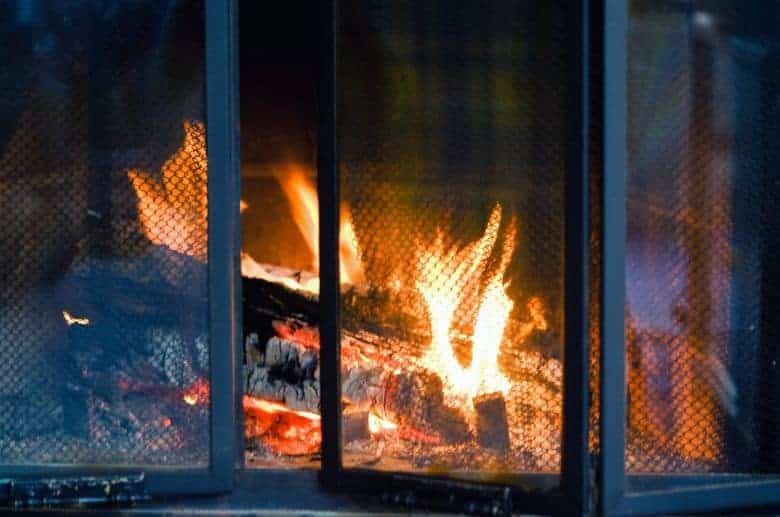
Fireplace doors are glass doors that fit over the opening of your fireplace. When closed, they create an airtight seal that prevents outside air from coming in.
Not only do fireplace doors prevent cold air from entering your home, but they also help improve the efficiency of your fireplace. That’s because when the doors are closed, they trap heat in the firebox, which means more heat goes into your home, and less escapes up the chimney.
Fireplace doors come in many styles, so you can find one that fits your decor. They’re also relatively easy to install, although you may want to hire a professional if you’re uncomfortable working with tools.
Remember to keep the doors closed when not using your fireplace and open when a fire is burning. This will help to prevent heat loss and conserve energy.
——
Do You Need to Hire Chimney & Fireplace Expert?
Get free quotes from qualified experts near you. No commitment required!
——
Additional Fixes
While the first three solutions will solve the majority of cold air problems from the fireplace, you can do a few other things to improve the situation further.
Some of the additional fixes include the following:
Installing Fireplace Inserts
If you have an older fireplace, it may not be as airtight as newer models. One way to improve the efficiency of your fireplace and stop cold air from coming in is by installing a fireplace insert.
Fireplace inserts fit inside your fireplace and help seal any gaps or cracks that may allow cold air to enter. Not only do they improve the efficiency of your fireplace, but they also help to keep your home warmer.
Sealing Off the Gap Between the Fireplace and the Floor
Another common way cold air can enter your home through the fireplace is through the gap between the fireplace and the floor.
You can use weatherstripping or expansion foam materials to seal off this gap. Apply the material to the gap, which will help create a seal to prevent cold air.
Installing a Fireback
For those unfamiliar with a fireback, a metal or ceramic panel sits at the back of your fireplace. In addition to adding a decorative touch to your fireplace, firebacks also help reflect heat into the room and prevent cold air.
Firebacks are relatively easy to install and can be done by most people. However, if you’re uncomfortable working with tools, you may want to hire a professional.
Hire a Professional
If you still have problems with cold air coming into your home through the fireplace, hire a professional. A professional can help identify areas that may allow cold air to enter and provide solutions for sealing them off.
Cold air coming into your home through the fireplace is a common problem, but you can easily fix it. Using one of the solutions above, you can stop cold air from coming into your home and keep your family warm all winter.
Conclusion
If you’re dealing with cold air coming into your home through the fireplace, don’t worry – we have professional solutions that can help! Contact us today, and we’ll be happy to help you figure out the best way to seal up your fireplace and prevent cold air.
Not only can our professionals help keep your family warm all winter, but they will also improve the efficiency of your fireplace.
You’re also welcome to browse our website for more information on chimney drafts, fireplaces, and more. Thanks for reading!
FAQ’S
Do chimney cowls stop drafts?
Chimney cowls are designed to help prevent drafts from coming into your home. Because they sit on top of the chimney, they can also prevent animals, elements, and birds from nesting inside.
Can I seal up the fireplace?
Absolutely not! Sealing up the fireplace would be a fire hazard. You can install a fireplace door or insert to prevent cold air from coming in through the fireplace.
When you seal up the fireplace, you also prevent the fire’s dangerous gases from escaping. These gases can be deadly if they build up in your home.
Should I leave the glass doors open on my fireplace?
We recommend always leaving your fireplace glass doors open when starting a fire until the fire dies completely.
This will help to ensure that your fire gets enough oxygen and prevents the build-up of dangerous gases. Once the fire is completely off, you can close the doors to help keep the heat in.

